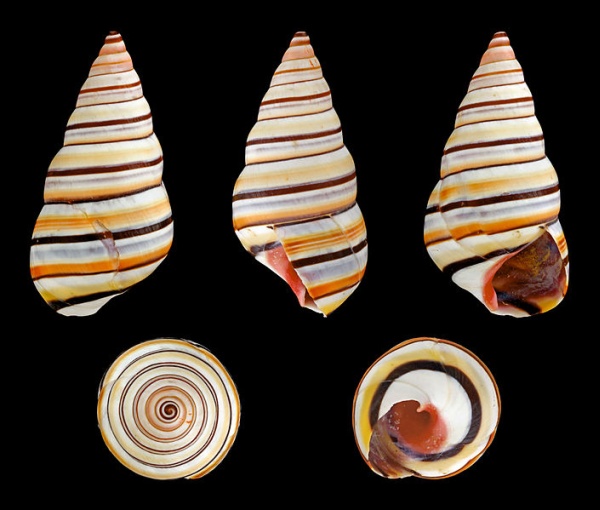This shell is so beautiful that it threatens the existence of the animal that wears it.
The candy cane snail (Liguus virgineus) is a land-based snail found on the island of Hispaniola, home of Haiti and the Dominican Republic. Because of its beauty it has been over-collected for the shell trade, making it hard to find and endangering the snail.
This particular shell is in the collection of the photographer, H. Zell, whose photo is one of the finalists for Wikimedia Common’s 2013 Picture of the Year.
Voting ended yesterday but you can still view Picture Of The Year finalists here.
(photo by H. Zell, Creative Commons license at Wikimedia Commons. Click on the image to see the original)

I had no idea these were becoming valuable. I have several of them that I bought during one of my trips to Myrtle Beach when I was a kid (which was a while ago). Thanks Kate!
Lauren, I’m not sure that they are particularly valuable to us (perhaps we breed them) but they are a source of money to the people of Hispaniola so they are over-collected.
Hi Kate,
I’m a junior science teacher putting together a card game for my pupils studying invertebrates. I’m interested in whether there are any theories as to why the candy cane snail has evolved such coloration? Are they toxic or is there a particular vegetation that this coloration camouflages them against? I don’t seem to be able to find anything about this on-line.
Many thanks
Sam
Sam, Here is the answer (in part) from Timothy Pearce Asst. Curator and Head, Section of Mollusks at the Carnegie Museum of Natural History in Pittsburgh:
Humans often ask about color in mollusk shells and while we can characterize the chemistry of color, in most cases we have no idea what the function of the color might be. In a few sea mollusks (like Cyphoma), their color is influenced by their diet; many sea slugs are brightly colored and also toxic, so the warning coloration hypothesis makes sense there; most land snails are drab brown and live in the leaf litter, so camouflage makes sense. But for many of the brightly colored ones, we don’t know. The brightly colored tree snails in Cuba, Polymita, have a black foot, and one hypothesis is that if a predator, like a bird, pecked the bright shell on the tree and if the snail fell to the ground foot side up, the bird would wonder where its brightly colored snack went (and the snail would survive).